AIA Spring Tour
Hungary
13th - 18th May 2019 |
|
Just a few
images from our tour
|
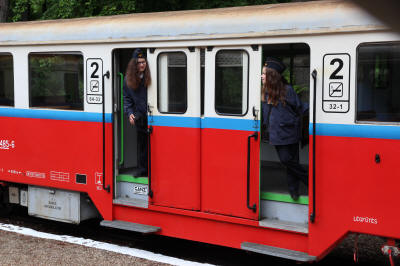 |
Pioneer or Childrens' Railway, Budapest
The Gyermekvasút or Line 7 is an 11.2 km narrow gauge railway line in Budapest, which connects Széchényi-hegy and Hűvösvölgy.
Other than the driver, all of the posts are operated by children
aged 10–14. |
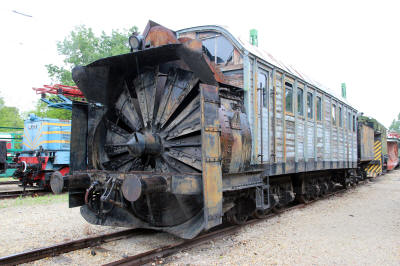 |
Magyar Vasúttörténeti Park – Hungarian
Railway History Park
Also widely known as the “Fusti” the history park is at the
former Budapest North Depot a workshop of the Hungarian State
Railways (MÁV). The museum covers more than 70,000 square meters and
it features over one hundred exhibits.
The North Depot's 1911 roundhouse remains intact and its 34 bays
provide an ideal home for the operational vintage fleet. The image
is of a snow blower which was amongst a collection of odd railway
vehicles. |
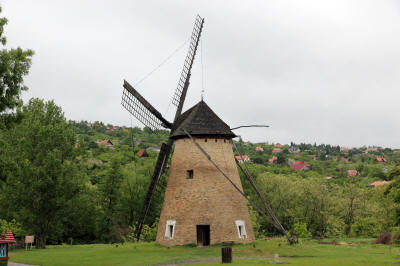 |
Szabadtéri Néprajzi Múzeum - Hungarian
Open air Museum
The Swedish scientist, Arthur Haselius established the world’s
first open air museum in 1891 in Stockholm to preserve the
characteristic buildings of various Swedish regions [ Visited by
the AIA during the Swedish Spring Tour 2011 ] It was named
Skanzen after the part of town of its location and in due time it
found its way into many languages, including Hungarian, as an
equivalent of open air museum. |
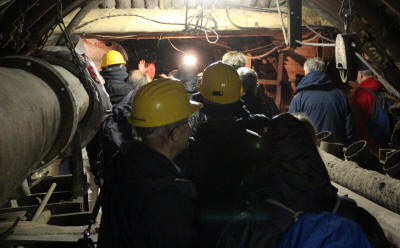 |
Oroszlányi Bányászati Múzeum - Mining
Museum Oroszlány
Most coal in Hungary is now extracted by open cast methods, but
the museum is located at the XX shaft of the Márkushegyi pit where
it was established in 2001. It was the last deep coal mine in
Hungary, and the establishment of the museum was part of a
co-ordinated programme to mitigate the economic and social
consequences of closure. The collection dates from 1970 when it was
first displayed at the XVI (sixteenth) shaft of the Márkushegyi pit. |
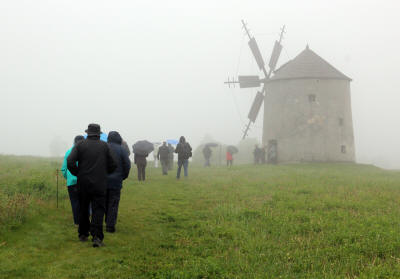 |
Tés Windmills
Tés is a small village in the Bakony Mountains, situated at a
height of 465 m. Thanks to the constant and reliable wind, four
windmills used to operate in Tés. The remaining two have six full
sails (which can be extended by additional boards in case of slow
wind). The Helt windmill was built around 1840 by carpenter János
Pircher and was named after the Helt family who operated the mill
for several generations. It’s a round-shaped mill with tapered,
rotatable shingle roof. There are two pairs of millstones in the
windmill and they can mill 4 quintals (400 kgs) a day. |
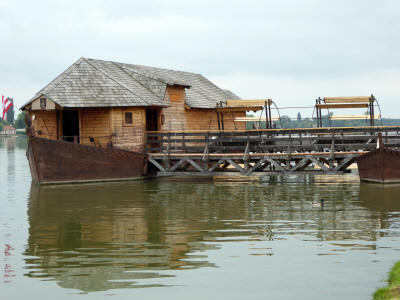 |
Ráckeve Boat Mill
Boat mills, also known as ship mills were very common on the
Tisza and Danube rivers in the 19th century. In 1863 4,301 boat
mills, 9,173 stream mills, 475 windmills and 147 steam mills were
operating in Hungary). Several boat mills were working on the Danube
at Ráckeve as well, where the last ship mill in Hungary sank during
the hard winter of 1968, when the ice broke the houseboat with the
milling equipment. In 2006 the Municipality of Ráckeve initiated the
idea of rebuilding the boat mill, and enthusiastic local residents
and workers prepared a full-functional replica of the float mill
based on written records, photos and drawings. |
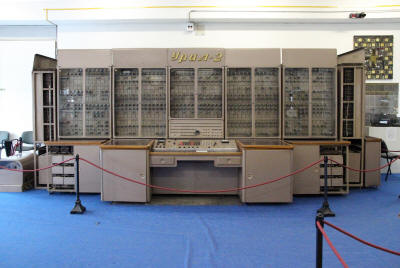 |
Technical Study Stores - Budapest
The Technical Study Stores can be considered as a museum, yet it
does not incorporate a permanent exhibiting place. The artefacts are
presented on metal shelves in three spacious halls –
sixteen-thousand pieces altogether. The collection contains world
patents, first copies and enormous power-machines. Technical
miracles, everyday achievements, household and electric devices of
the last centuries can be seen in a huge amount and density. The
image is of the Ural-2 computer made in the USSR in the early 1960s.
The machine used valves, with the hardware being able to perform
12,000 floating-point calculations per second. One word consisted of
40 bits and was able to contain either one numeric value or two
instructions. Ferrite core was used as operative memory. |

